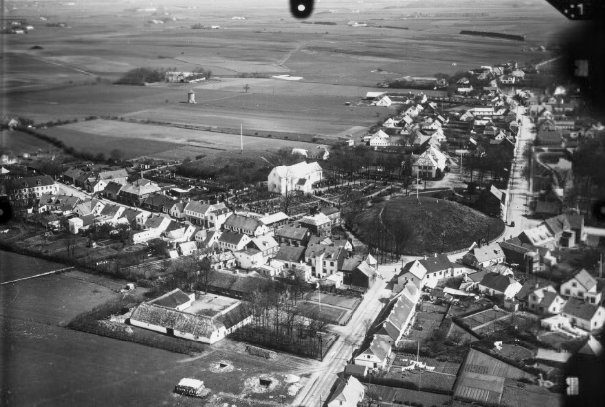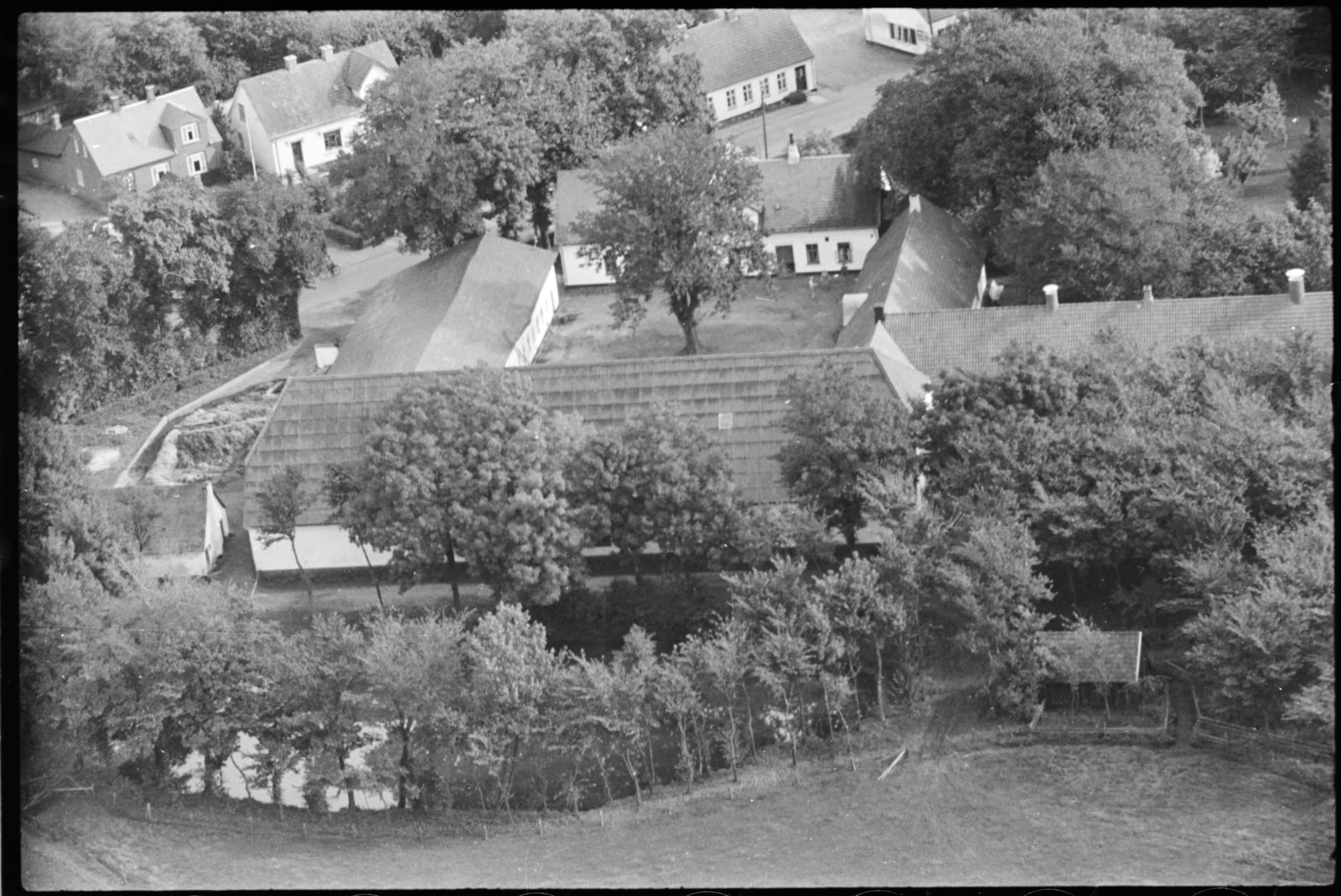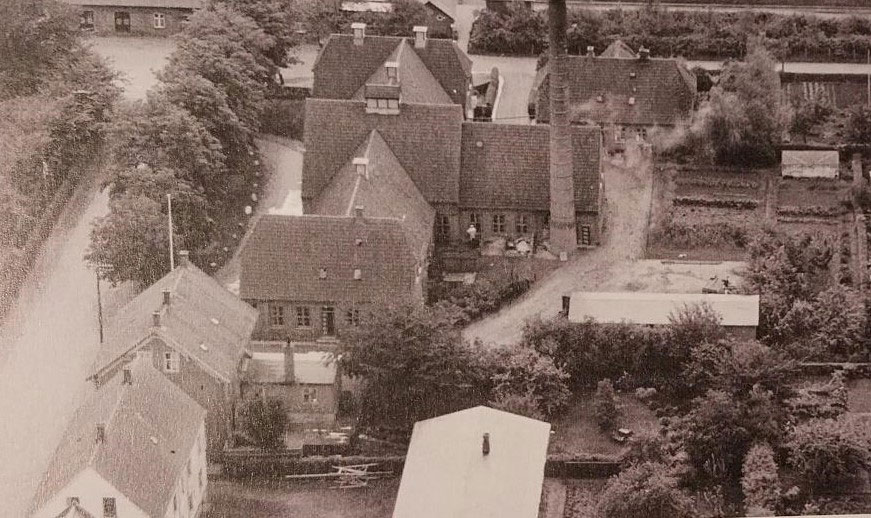Siden er under rekonstruktion
jelling-før og nu
. Klik på linkene herunder og få meget mere at vide. God fornøjelse Jelling igennem de sidste 150 år-200 år |
Asta Andersens hus - Gormsgade 13
Bethania - Jelling Have
De forsvundne huse gormsgade1-3
En Dronning lagde en sten
Genforeningsstenen
Haughus - og den dygtige læge
Håndværkerforeningen
Jelling Kro
Jelling Mølle - Byens Hus
Jelling Sparekasse
Jelling Brugsforening
Jernbanestationen
Poppos Jernbyrd - gavlmaleri
Runecentret - Det gamle Mejeri og Hytteost
Skolen i Jelling
"Vandsten"
Tour de France Stenen
University College Lillebælt
Østerbydammen
Vidste du? .... meget mere information
Rigtig god fornøjelse med denne hjemmeside. Siden er ikke lavet af professionelle. Der er brugt 123site.com til at lave den.
Eventuelle fejl og mangler kan kun tilskrives Webmaster. Skriv venligst via kontakt knappen, hvis du har kommentarer. Rettelser og tilføjelser modtages med tak.
kontakt
runecentret - det gamle mejeri - og hytteost
Historien om Jelling Andelsmejeri som blev til Runecentret i Jelling - og opfindelse af Hytteost |
|
Jelling har haft to mejerier. Det første er fra 1887 og var beliggende på Vejlevej 18. Da det var nedslidt, afløstes det af et nyt mejeri i 1926, som lå praktisk mellem Jelling Station og Jelling Posthus.
I 1882 oprettede man Danmarks, ja, verdens første andelsmejeri i Hjedding ved Ølgod. Kun fem år efter fik Jelling sit andelsmejeri. Torsdag den 12. september 1887 startede omkring 150 andelshavere levering af sødmælk til Jelling Mælkeri. Det nye mælkeri var bygget på hjørnet af Vejlevej og Skovgade, hvor Rema 1000 nu ligger. Med tiden blev mejeriet for lille og var nedslidt, da der stadig kom flere leverandører til, og man havde desuden problemer med beliggenheden, da mælkevognene ikke kunne blive ved med at holde på den stadig mere trafikerede hovedvej 18.
28. maj 1926 flyttede man til et nyopført mejeri på Stationsvej, som havde kostet den nette sum af 244.000 kr. Arkitekten var den på den tid meget benyttede arkitekt E. V. Lind fra Skive. Her var plads til kommende års udvidelse af leverandørkredsen. Mejeribestyrer Frode Kragh Iversen blev ansat den 15. august 1936 og virkede som en dygtig og fremsynet leder indtil 1971. I disse år udviklede Jelling Andelsmejeri sig meget. 14. september 1937 afholdtes 50 års jubilæum ved en fest i Jelling Håndværkerforening med 480 deltagere og dagen efter med 300 unge. I 1946 var mejeriet med til at starte DOFO i Vejle, der blev Danmarks største osteeksportselskab.
I 1950 blev Jelling Andelsmejeri udpeget af Mejeriernes Fællesorganisation, som det første mejeri i Europa til produktion af Cottage Cheese til de amerikanske tropper i Europa. Det blev en succes med salg til hele verden. I 1962 holdtes 75 års jubilæumsfesten i Vingsted med 700 deltagere. Nu solgtes hytteost til 30 pladser i 21 lande i alle fem verdensdele. 12. januar 1971 indmeldtes Jelling Andelsmejeri i Mejeriselskabet Danmark. Nu Arla.
Produktionen på Jelling Mejeri kørte videre under ledelse af Tage Tangsgaard. I 1977 havde produktion og afsætning af hytteost oversteget rammerne af Jelling Mejeris kapacitet, og en udvidelse var nødvendig. Derfor var det billigere at flytte produktionen til Tyrstrup ved Christiansfeldt. Mejeriet blev solgt med grund og alle bygninger til Niels Kjærgaard for 975.000 kr.
Jelling Mejeris fem mejeribestyrere:
- Lund 1887-1888- N. Pedersen 1888-1905- J. Chr. Jensen 1905-1936- F. Kragh Iversen 1936-1971- Tage Tangsgaard 1971-1976
Jelling Mejeri, Vejlevej 18, 1910 | Jelling Mejeri, Vejlevej 18, 1912, |
|
|
Jelling Mejeri, Stationsvej omkring 1950 | |
|
|
Efter en beskeden start af Jelling El-forretning i 1976 fik Jonna og Niels Kjærgaard i 1977 muligheden for at købe Stationsvej 8. Jelling Andelsmejeris bygninger skulle sælges og finde anden anvendelse. Borgmester Karlo Søndergaard og formanden for mejeriet, Otto Pilgaard, fandt sammen med Niels Kjærgaard en løsning. Jonna og Niels Kjærgaard købte mejeriet og Jelling El-forretning fik dermed en tidsvarende placering i byen og samtidig åbnedes muligheder for udlejning af forretninger og lejligheder i de store bygninger. Mejeriet havde en grundplan på 1250 kvm og ca. 1000 kvm i overetagen.
En omfattende ombygning gik i gang og allerede 1. august 1978 flyttede Jelling Radio & TV ved Ib Jensen ind i de lokaler der før havde huset Jellings mejeriudsalg og oven på denne fløj, hvor der tidligere havde boet mejerister, blev værelserne nu udlejet til lærerstuderende.
I november 1979 blev Runecentret officielt åbnet med en festlig indvielse. Udover ”Jelling Radio & TV” var de første lejere ”Salon Poulsen”, ”Butik Kirsten” og ”Jelling El-forretning”. Siden har der naturligt været udskiftninger hen ad vejen, hvor andre butikker er kommet til, lige som folk med behov for en privatbolig gennem længere eller kortere åremål har haft til huse i bygningen.
Niels Kjærgaard har hele tiden stået for ombygning af lejemålene efter drøftelse med lejerne. Målet har været at skabe et helhedsindtryk, hvor den gamle fine mejeribygning i videst muligt omfang holder stilen. Ved den seneste ombygning i 2015 har man i så stort omfang som muligt ført facaden ud mod Stationsvej tilbage til arkitekt E. V. Linds oprindelige byggestil fra midten af 1920´erne. En forskønnelse byens borgere i høj grad påskønner, og da Vejle Kommune har planer om at forskønne Stationsvej, ser fremtiden lovende ud for Runecentret.
- Conny Bæk Hansen
Kilder: Svundne Tiders årsskrifter fra 2015 og 2016.
 TILBAGE TIL OVERSIGT
TILBAGE TIL OVERSIGT jelling brugsforening
MØLVANGVEJ 2
|
Hvis man kigger godt efter, kan man se, at Brugsen består af en ældre og en nyere del. Den ældre er bygget i 1960 og den er bygget med det formål at drive en brugsforening. Jelling havde haft en brugsforening siden 1920, men den lå i Gormsgade i et hus som ikke længere findes. Oprindeligt lå præcis her en af Jelling større gård, Rosenvold. Brugsen i Gormsgade levede på lånt tid, da man godt vidste, at der lå et stort ønske om at frilægge gravhøjene. Derfor havde man sikret sig ved at købe et par jordlodder fra den gamle gård Rosenvold og i 1959 kunne man i dette hus indvie en moderne selvbetjeningsbutik. Butikken lå i stueetagen, på første sal boede uddeleren og i tagetagen var der plads til kommis’erne. |
100 år med brugs i Jelling. læs historien
Vafo.dk
Nedenstående citeret delvist derfra:
- Jelling og Omegns Brugsforening bliver stiftet 9. december 1920 på en generalforsamling i salen på Jelling Håndværkerforening.
- Brugsforeningen lå på Gormsgade. Men den flyttede 22. juli 1959 til Mølvangvej.
- I 1960’erne vokser Jelling, og brugsforeningens bestyrelse beslutter at bygge om og til.
- I 1968 er butikken på 365 kvadratmeter. Det er også i disse år, at man begynder at bruge kontant betaling.
- Jelling vokser yderligere, og Brugsen får brug for endnu mere plads – omtrent det dobbelte. I 1972 køber brugsforeningen ”Pumpemandens hus” på hjørnet af Fårupvej og Mølvangvej.
- Gennem længere tid bliver det undersøgt, hvor i byen en ny og større brugsbutik kan ligge. Det ender med, at Brugsen i stedet for at flytte bliver udvidet. I 1982 åbner den 650 kvadratmeter store forretning.
- I 1993/94 bliver Brugsen udvidet igen. To år senere – i 1996 – bliver Brugsens nuværende uddeler Henrik Werge ansat.
Den første brugsbygning 1920 | ||||||
Rosenvold lå oprindelig i Østerbyen, formentlig ved siden af Højgård. Da den flyttedes om i Vesterbyen, blev den placeret på den snævre plads mellem Gormshøj og landevejen, tæt op ad Sydhøjens vestside og her havde den sin plads, til den ca. 1852 brændte. Dens ejer, Johan Frederik Rosenvold, opførte sin nye gård vest for landevejen, det nuværende Mølvangvej 2. Stuehuset var efter Jellingforhold meget stort og herskabeligt. Det fornemme har en eftertid valgt at understrege ved at opkalde gården efter bygherren og give den det smukke navn Rosenvold. Bygningerne blev nedrevet i forbindelse med Brugsens opførelse 1959. En villavej i Jelling på gårdens jorder har fået navn efter gården. Rosenvold 1948-52 
Det er muligt at se større billeder her |
runecentret - det gamle mejeri - og hytteost
Historien om Jelling Andelsmejeri som blev til Runecentret i Jelling - og historien om Hytteost Runecenteret 2023 |
|
Jelling har haft to mejerier. Det første er fra 1887 og var beliggende på Vejlevej 18. Da det var nedslidt, afløstes det af et nyt mejeri i 1926, som lå praktisk mellem Jelling Station og Jelling Posthus.
I 1882 oprettede man Danmarks, ja, verdens første andelsmejeri i Hjedding ved Ølgod. Kun fem år efter fik Jelling sit andelsmejeri. Torsdag den 12. september 1887 startede omkring 150 andelshavere levering af sødmælk til Jelling Mælkeri. Det nye mælkeri var bygget på hjørnet af Vejlevej og Skovgade, hvor Rema 1000 nu ligger. Med tiden blev mejeriet for lille og var nedslidt, da der stadig kom flere leverandører til, og man havde desuden problemer med beliggenheden, da mælkevognene ikke kunne blive ved med at holde på den stadig mere trafikerede hovedvej 18.
28. maj 1926 flyttede man til et nyopført mejeri på Stationsvej, som havde kostet den nette sum af 244.000 kr. Arkitekten var den på den tid meget benyttede arkitekt E. V. Lind fra Skive. Her var plads til kommende års udvidelse af leverandørkredsen. Mejeribestyrer Frode Kragh Iversen blev ansat den 15. august 1936 og virkede som en dygtig og fremsynet leder indtil 1971. I disse år udviklede Jelling Andelsmejeri sig meget. 14. september 1937 afholdtes 50 års jubilæum ved en fest i Jelling Håndværkerforening med 480 deltagere og dagen efter med 300 unge. I 1946 var mejeriet med til at starte DOFO i Vejle, der blev Danmarks største osteeksportselskab.
I 1950 blev Jelling Andelsmejeri udpeget af Mejeriernes Fællesorganisation, som det første mejeri i Europa til produktion af Cottage Cheese til de amerikanske tropper i Europa. Det blev en succes med salg til hele verden. I 1962 holdtes 75 års jubilæumsfesten i Vingsted med 700 deltagere. Nu solgtes hytteost til 30 pladser i 21 lande i alle fem verdensdele. 12. januar 1971 indmeldtes Jelling Andelsmejeri i Mejeriselskabet Danmark. Nu Arla.
Produktionen på Jelling Mejeri kørte videre under ledelse af Tage Tangsgaard. I 1977 havde produktion og afsætning af hytteost oversteget rammerne af Jelling Mejeris kapacitet, og en udvidelse var nødvendig. Derfor var det billigere at flytte produktionen til Tyrstrup ved Christiansfeldt. Mejeriet blev solgt med grund og alle bygninger til Niels Kjærgaard for 975.000 kr.
Jelling Mejeris fem mejeribestyrere:
- Lund 1887-1888- N. Pedersen 1888-1905- J. Chr. Jensen 1905-1936- F. Kragh Iversen 1936-1971- Tage Tangsgaard 1971-1976
Jelling Mejeri, Vejlevej 18, 1910 | Jelling Mejeri, Vejlevej 18, 1912, |
|
|
Jelling Mejeri, Stationsvej ca.1950 | |
|
|
Efter en beskeden start af Jelling El-forretning i 1976 fik Jonna og Niels Kjærgaard i 1977 muligheden for at købe Stationsvej 8. Jelling Andelsmejeris bygninger skulle sælges og finde anden anvendelse. Borgmester Karlo Søndergaard og formanden for mejeriet, Otto Pilgaard, fandt sammen med Niels Kjærgaard en løsning. Jonna og Niels Kjærgaard købte mejeriet og Jelling El-forretning fik dermed en tidsvarende placering i byen og samtidig åbnedes muligheder for udlejning af forretninger og lejligheder i de store bygninger. Mejeriet havde en grundplan på 1250 kvm og ca. 1000 kvm i overetagen.
En omfattende ombygning gik i gang og allerede 1. august 1978 flyttede Jelling Radio & TV ved Ib Jensen ind i de lokaler der før havde huset Jellings mejeriudsalg og oven på denne fløj, hvor der tidligere havde boet mejerister, blev værelserne nu udlejet til lærerstuderende.
I november 1979 blev Runecentret officielt åbnet med en festlig indvielse. Udover ”Jelling Radio & TV” var de første lejere ”Salon Poulsen”, ”Butik Kirsten” og ”Jelling El-forretning”. Siden har der naturligt været udskiftninger hen ad vejen, hvor andre butikker er kommet til, lige som folk med behov for en privatbolig gennem længere eller kortere åremål har haft til huse i bygningen.
Niels Kjærgaard har hele tiden stået for ombygning af lejemålene efter drøftelse med lejerne. Målet har været at skabe et helhedsindtryk, hvor den gamle fine mejeribygning i videst muligt omfang holder stilen. Ved den seneste ombygning i 2015 har man i så stort omfang som muligt ført facaden ud mod Stationsvej tilbage til arkitekt E. V. Linds oprindelige byggestil fra midten af 1920´erne. En forskønnelse byens borgere i høj grad påskønner, og da Vejle Kommune har planer om at forskønne Stationsvej, ser fremtiden lovende ud for Runecentret.
- Conny Bæk Hansen
Kilder: Svundne Tiders årsskrifter fra 2015 og 2016.
TILBAGE TIL OVERSIGT
Vejle Kommunes borgmester Jens Ejner Christensen (V) holdt den officielle indvielsestale, som blev afsluttet med ordene:
"Med denne sten indvies i dag fuldendelsen af Monumentområdet i Jelling"
Herefter slog Hendes Majestæt Dronningen to slag på den sidste sten med hammer og mejsel, hvorefter brolæggeren lagde stenen.
På stenen står med runer:
"Margrethe Dronning lagde denne sten tusind somre efter Harald - det år da Frederik blev konge."
Inden da var Dronning Margrethe rundt langs padisaden og talte bl.a. med brolæggerne.
Herunder links til andre sider om Dronningens besøg i Jelling:
Kongehuset:
https://www.kongehuset.dk/foto-video/indvielse-af-det-fuldendte-monumentomraade-i-kongernes-jelling
Billedbladet:
https://www.billedbladet.dk/kongelige/danmark/stort-galleri-efter-11-aar-ser-dronning-margrethe-det-faerdige-resultat
TVSyd:
https://www.tvsyd.dk/vejle/dronning-margrethe-laegger-ny-runesten-med-historisk-tekst
den berømte læge på haughus
Landmandskonen, 34 årige fru Hansen fra Øster Snede, var den første, der i 1867 overlevede at få fjernet en ovariecyste . Og det var lægen på Haughus Gods - Claudius Julius Boye, der førte kniven
I et lille, afsidesliggende hus udførte landlægen Claudius Julius Boye den første, danske ovariotomi, som ikke endte med patientens død.
Indtil september 2024 lå et lille hvidt hus med en helt særlig historie lidt øst for Jelling ad landevejen mod Vejle. Huset var bygget i 1830 og havde i de sidste mange år kendt bedre dage. Faktisk var det tæt på at falde sammen, inden det til sidst blev revet ned. Det er svært at forestille sig, at det var i dette hus, at der i 1867 blev skrevet et vigtigt kapitel i dansk medicinhistorie. Det var nemlig her, at en landlæge udførte Danmarks første vellykkede ovariotomi. En operation, ingen patienter før havde overlevet.
Lægen på Haughus
I 1855 købte læge Claudius Julius Boye med sin kone Emilie Haughus Gods. Claudius var ikke en adelig mand, selvom han er manden, der har gjort Haughus Gods ved Jelling til noget specielt i historiebøgerne. Faktisk var han ud af en så fattig familie, at familien flygtede fra økonomisk ruin til USA, men efterlod i 1827 den da fire-årige Claudius hjemme i Danmark, hvor han kom til at bo hos en farbror i Rudkøbing. . Farbroderen var købmand, og barnløs, og familien i Rudkøbing gav unge Claudius en god og tryg opvækst. Og uddannelse.Claudius blev gift med Emilie, og parret blev dem, som byggede øverste afsnit på Haughus' hvide hovedbygning. Haughus lidt udenfor Jelling har en historie, der i hvert fald går tilbage til 1700-tallet.
Claudius havde boet og fungeret som læge i Gråsten, men lægegerningen ville han lægge bag sig. Han var nemlig krigslæge under De Slesvigske Krige i 1848-50, og havde set så meget elendighed, at han var blevet træt af sit job.
I stedet ville han være landmand. Og det blev markerne udenfor Jelling, der blev familiens omdrejningspunkt. Han blev landmand med stort L. og var i flere år formand for Vejle amts Landboforening.
Hans tillidsvækkende personlighed førte imidlertid patienter til ham for at søge råd, og lidt efter lidt begyndte han igen at få et lysere syn på lægegerningen,
En ny og storslået vej kom han ind på, da han d. 3.9.1867 med held udførte en stor underlivsoperation (ovariotomi) der i de otte tidligere afprøvede tilfælde var mislykkedes for landets dygtigste kirurger i københavn En gårdmandskone fra Øster Snede, der led af en æggestoksvulst – et tilsyneladende håbløst tilfælde – henvendte sig med indtrængende anmodning om at blive opereret netop af ham. Efter at han længe havde vægret sig derved, fordi han aldrig havde set en sådan operation og ikke kendte dens teknik, kom han dog efter samvittighedsfuld overvejelse og læsning af en dansk kollega i USA, Sigismund Daniel Jacobsons om en lykkeligt gennemført ovariotomi til det resultat, at han ikke turde undslå sig. De fornødne instrumenter fik han til låns fra Frantz Howitz, der nogle år i forvejen (1863) havde indført operationen i Danmark, Nogle kolleger kom til assistance, og i et lille husmandshus tre km øst for Jelling udførte han nu heldigt operationen, og hun blev den første herhjemme, der overlevede at få fjernet en æggestok (ovariotomi). I doktorens notater kunne man læse, at det havde været afgørende, at operationen fandt sted i et meget rent, sundt og luftigt lokale på landet. Så i en tid før man kendte til bakterier, ramte Claudius rigtigt. Plejen bagefter, som Emilia stod for, var også fyldt med renlighed og omsorg.
Begivenheden rygtedes hurtigt, og talrige lignende syge søgte til Haughus, og i løbet af en halv snes år havde han udført ca. 70 lignende operationer, hvoraf 42 med heldigt udfald – et for den tid meget godt resultat Sammen dermed udfoldede han en voksende virksomhed på andre kirurgiske områder, alt med stort held, idet hans samvittighedsfuldhed, sikre blik og eminente praktiske dygtighed overvandt alle de vanskeligheder som knyttede sig til hans ufuldstændige kirurgiske uddannelse.
Det siges, at der blev foretaget mange forskellige operationer på bl.a. Haughus, men også i små huse rundt om i Jelling.
Claudius Julius Boye ligger begravet på Jelling Kirkegård
Billedref
Billede 1 Det lille hus på Vejlevej i dets senere dage https://ugeskriftet.dk/nyhed/her-fodtes-dansk-underlivskirurgi
Billede 2 Claudius Julius Boye. Vejle Stadsarkiv
Billede 3 Beskrivelse: Læderindbundet bog, der indeholder C.J. Boyes håndskrevne optegnelser over operationer i perioden 1875-1877, bl.a. 31 ovariotomier. Datering: 1875
https://stenodb.sm.au.dk/Search/ResultM?museumssag=313
https://lokalavisen.dk/arkiv/ECE15624537/laegen-der-ikke-ville-vaere-laege-reddede-42-liv/ 2014






































